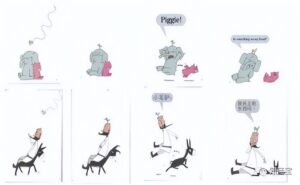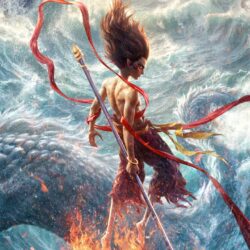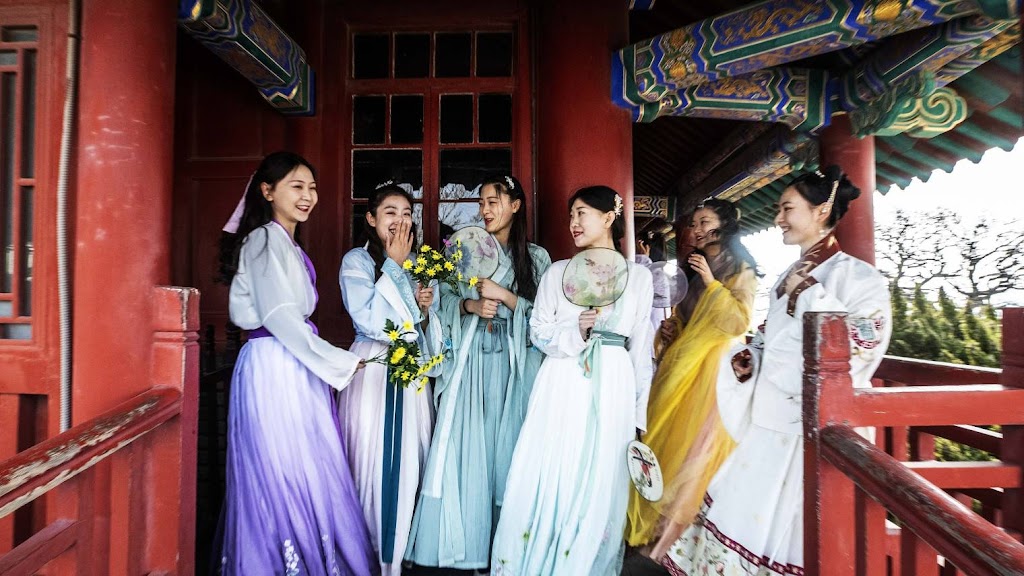It is an interesting copyright dispute case about the copying of a picture book’s plot and composition layout. Or you may call it a kind of quite high-end plagiarism.
This dispute is about one of Maurice Willems famous book series Elephant and Piggie.
Maurice Willems accused a local Chinese Press copyright infringement because it published the book Avanti and Donkey, which plagiarized Elephant and Piggie .
Maurice Willems accused a local Chinese Press copyright infringement because it published the book Avanti and Donkey, which plagiarized Elephant and Piggie .
The court found that although the animation characters in the two book series are different, the the composition layouts of the main text, the character’s expressions and dialogues, the storylines expressed through the character’s image and dialogue are almost identical. Avanti and Donkey is only the translation of the dialogue in Elephant and Piggie. Thus, the breach of copyright is confirmed.
First Instance Case No:(2019)京0105民初18153号;
Second Instance Case No:(2021)京73民终938号
Several points the Court pointed out in the final Judgement can be referenced in cases in future:
1. Notarization of extra-territorial evidence is not a must to confirm its validity.
The original intention for requiring extra-territorial evidence to perform notarization or other certification procedures is that it is difficult for the Court to investigate and verify the extra-territorial evidence, and it can only be strengthened by the credibility of authoritative institutions, and the authenticity of the evidence can be enhanced by imposing certain procedures or formalities on the extra-territorial evidence itself.
However, it does not mean that the Court will only accept or consider extra-territorial evidence after being notarized or certified. According to the facts found in this case, Maurice Willems books are legal publications published in the United States that can be accessible from public channels, and Maurice Willems books also have Chinese translations legally published in China. Based on this, the authenticity of the copyrighted books can be confirmed, and notarization is no longer necessary.
2. Copyright infringement and plagiarism, what are the differences?
According to the Copyright Law, plagiarism not only includes the copying the content of others’ works as one’s own works without permission, but also includes the situation of adapting others’ works as one’s own works without permission. Plagiarism is a relatively serious infringement. Using it in the name of a plagiarist violates the personal rights of the author. The adaptation of others’ works as one’s own works in the alleged infringement constitutes plagiarism. According to Argumentum mariore ad mi- nus, the Court can only judge whether the behavior has constituted plagiarism
3. Guiding opinions on the judgment of infringement of picture books.
A picture book is a story book that uses pictures and simple words to jointly elaborate the story content and express specific emotional themes. The originality of a picture book lies not only in the colorful pictures or words themselves, but also in the specific expression of emotions and themes through the complementarity of pictures and words and the setting of story structure, story plot, characters and roles.
In this case, the books accused of infringement are picture books with Nasreddin and little donkey as the main characters, while the copyrighted books are picture books with elephant and pig as the main characters. Although the characters’ images are different, the expressions, actions and dialogue contents of the characters, the story plot and composition layout expressed through the characters’ images and dialogues are highly consistent, and even the page numbers and covers, front and back ring lining and title page also correspond one by one.
In conclusion, the accused books are formed by replacing the character images of the copyrighted books, and translating the copyrighted book names and character dialogues into Chinese. Both are obviously substantially similar in the specific expression of the picture books, so plagiarism of the accused books are confirmed.



